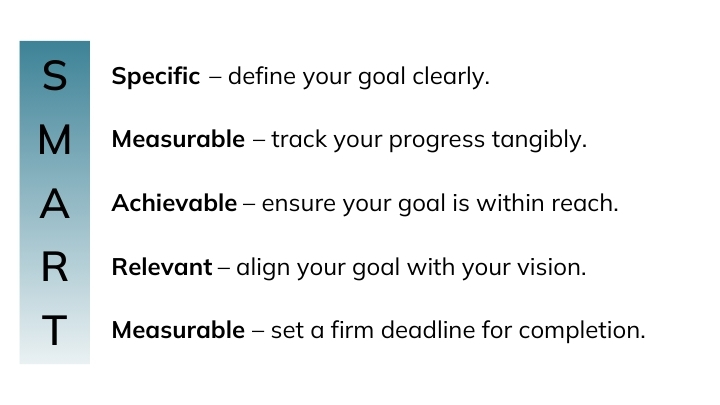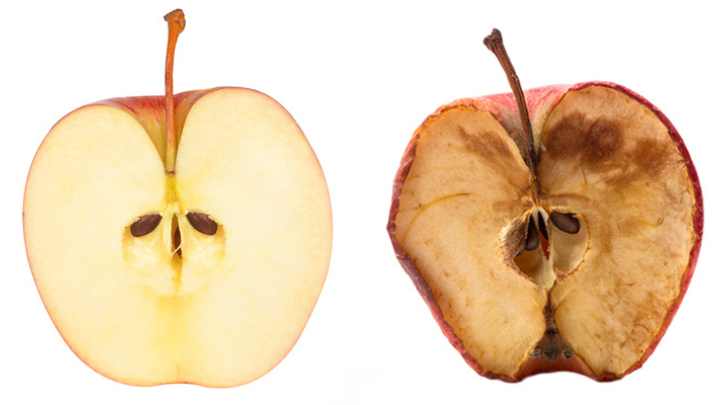We are not the only animals setting goals. Honey bees set goals to collect honey back to the hive. Predators set goals for hunting and killing their preys.
What truly sets us apart from the animal kingdom are two characteristics. Humans can:
- Set goals that are immediate, short-term, midterm, long-term, or even lifetime goals. We are able to modulate our time scales.
- Juggle in between different goals at the same time; home, health, work, relationships, you name it.
This article at Avea is a summary of Dr. Andrew Huberman’s podcast: The science of setting and achieving goals.
In this article
Free guide to reverse your biological age

- Master the science of rejuvenation.
- Apply proven tips to turn back the clock.
- Transform your health with top longevity specialists.
The neuroscience behind goal setting
We all share the same four neural circuits involved in setting and achieving goals.
- Amygdala circuit: Involved in experiencing anxiety and fear, guiding avoidance behaviours.
- Ventral Striatum (Basal Ganglia) “Go” circuit: Directs actions towards practising healthy habits (e.g., deciding to wake up early for a run).
- Ventral Striatum (Basal Ganglia) “No-Go” circuit: Inhibits actions that are not aligned with healthy habits (e.g., deciding not to eat a cookie as breakfast).
- Cortex circuit, specifically involving:
- Lateral Prefrontal Cortex (LPFC): Responsible for executive functions and long-term planning.
- Orbitofrontal Cortex (OFC): Integrates emotions with the evaluation of current progress towards goals.
Goals are in fact linked with different elements, including anxiety, fear, action, inaction, planning, thinking, and emotionality (before v.s. after).
No matter how big or small the goals, the same circuits are involved across every human when setting, executing, and achieving them.
Any discussion about goal or goal pursuit, without mentioning about dopamine will be incomplete.
–Dr. Andrew Huberman.
These four neural circuits team up to perform two main functions. They help you:
- place value on a particular goal (involves neuromodulator, dopamine).
- decide whether to act on that particular moment in time, based on the perceived value of the goal.

Our subjective understanding of why we are doing something is fundamental for the effects that we will get from that behaviour.
If you’re someone interested in achieving your goals, chances are you’ve probably come across hundreds of acronyms till now.
- ABC method: Achievable, believable, and committed.
- SMART: Specific, measurable, attainable, realistic, and time-bound.
- SMARTER: SMART + ethical, rewarding.

But rather than sticking to ways that end up being counterproductive, when it comes to goal setting and pursuit, it’s better to start by understanding the neuroscience behind goals.
This includes understanding how you perceive yourself in space and time.
What is peripersonal and extra-personal space?
1. Peripersonal space
Your peripersonal space is all the space within your body, the surface of your skin, and your immediate environment. This includes the feelings of your toes on the ground, or even the cup of tea in front of you.
Interoception is the way you perceive your internal state and also the materials within your reach (could guide to consumer behaviours). This is governed around the neurotransmitter, serotonin.
The peripersonal space is where you evaluate your progress, how you feel about your pursuit. It’s the here and now, even if the goal is in the future.

But moving towards any goal requires the change from your peripersonal space to your extra-personal space.
2. Extra-personal space
Extra-personal space is everything that is beyond the confines of your reach. This could be some other locations in space and time, like dancing classes or your favourite italian restaurant. Here, neurotransmitter dopamine plays the main role.
Exteroception is when you focus on an external point. Getting outside your peripersonal space, puts yourself in goal pursuit mode. Just by changing where you look, can change the execution of your goal.
“If we are to be good at goal seeking, at setting and achieving our goals, we have to be able to toggle between a clear understanding of our peripersonal space – what we have and how we feel in the immediate present – and the extrapersonal space – our ability to understand what’s in the extra personal space and move into that extra personal space.
—Dr. Andrew Huberman
Discover the different supplements that Dr. Andrew Huberman takes.
The role of dopamine in goal setting & achievement
A decrease in dopamine does not necessarily inhibit the ability to experience pleasure. It inhibits the ability to pursue or go through a series of actionable steps in order to achieve pleasure.

Dopamine is the common currency by which every human pursue goals. It is found right at the heart of our motivational and emotional states.
When something new and positive happens, dopamine is released in the highest amounts, placing us in a greater state of motivation. How it gets released relative to our anticipation of a reward is key.
Here’s what all this would mean in a nutshell:
When we anticipate something positive will happen, we experience a decent increase in dopamine, and when it does happen, we once again experience a slight increase.
Dopamine drops below baseline levels when what we predicted does not happen. This is where disappointment settles in. The dopamine system can be leveraged to set milestones more accurately.
Science-backed tools for achieving your goals
Based on different scientific studies, here are 10 tips to help you set and achieve your goals.
1. Use the 85% rule for optimal learning
One of the key notion of neuroplasticity is that making errors is a good thing.
Though frustrating, making errors will not only heighten your level of focus, but also increase the probability you learn a new skill. Science tells us to pursue errors simply as an entry point for neuroplasticity.
Set your goals such that you fail/make an error about 15% of the time[1].
If it’s way too high (e.g. 50%), what you’ve set out to accomplish is too hard for yourself. Failing about 15% of the time seems to be optimal for learning. Note that this will also be impacted by your external environment, your health, and so on.
2. Focus your visual attention to initiate goal pursuit
All visual information enters through your eyes, and can head down through two different pathways:
- Vergence eye movements: This involves neurons resolving fine details and small changes in time. It brings our vision to a common point, regardless of how far the vision is.
- Magnocellular pathway: This is involved in taking global information at once. It is more of a relaxation of the neural circuit linked to alertness and attention.
Imagination of a goal needs to be coupled with the physical pursuit of the goal.
Visually focusing on a point does a number of changes to your heart, body, and mind. It prepares you for action by increasing your systolic pressure[2], and adrenaline is released.
Before starting a task which require your focus, look at something outside your peri-personal space and focus on it for 30–60 seconds.
3. Motivate yourself by visualising the aged you
Perceiving yourself or your own image in the future can set you on a path towards long-term goals. We become more motivated to think long-term when we see ourselves 30–40 years from now on[3].
4. Visualise your big win at the start, then visualise failure to keep you going
Research has shown a near doubling in the probability of reaching your goals if you focus routinely on foreshadowing failure.
The more specific you can get about writing and speaking on how bad it will be if you don’t achieve your goals, the more likely you’ll be able to achieve them.
This is because our brain and body are better at staying away from danger than pursuing what we want.

Predicting and visualising failure is not the same as thinking about ourselves failing. This method is used to trigger the biological mechanism of generating fear, anxiety, and motivation.
Imagining failure will increase readiness in your system and your systolic blood pressure. This helps tap into avoidance circuits, making you more likely to take actions to avoid negative outcomes.
5. Your goals should be hard, but not too hard
If your goals are too easy to attain, you will not get the increase in systolic blood pressure and recruitment of your vascular and neural systems to push you into ongoing action.
We all have moments where we give up easily, rather than continuing the ‘’effort’’. Despite the excitement, the goal is not enough to place ourselves in a state of readiness and action.
This is because the goal needs to be tangible; realistic but truly challenging.
6. Limit your options
Trying too many goals at once is counterproductive. Think about 3 major goals per year. Remember, put a lot of things in front of you and your attention drifts. Put fewer things, and your attention becomes narrow.
7. Create a concrete plan, then update
This means planning or even writing a specific set of actionable steps that gets right down to detail about the success you are seeking.
Be detailed, but constantly update the plan. A good practice would be to assess your progress weekly as a start, until you find your own interval that works best for you.
8. Reward yourself, but not too much
You want a situation where your own positive feedback causes waves of dopamine in a healthy way. Weekly rewarding your progress both mentally and physically is an important step to remind yourself that you are on track.
Dopamine in itself will provide a state of motivation to continue with the regular pursuit of your goals.
9. Be a pro at space-time bridging
Your visual system works by visualising space and time.
Goal setting involves (1) having a goal that is off in the future, and (2) dividing the time between now and the achievement of that goal, into milestones that range in duration.
Here’s a quick practice that Dr. Andrew Huberman does every day to use his visual system to move with more flexibility and control in his life. He calls it space-time bridging.
Learn how to optimise the switch between your extra-personal space and peripersonal space.
- Close your eyes. Take 3 breaths and focus on the internal state of your body. You’re now 100% in your peripersonal space.
- Open your eyes. Look at any part of your body (e.g. your palm), whilst taking 3 breaths. Now you’re at 90% peripersonal space.
- Switch to viewing something further away. Take 3 breaths. You’re moving from your peripersonal to your extra-personal space.
- Widen your horizon and look far. Take 3 breaths. You’re now 100% in enteroception.
- Get back to your internal state. Take 3 breaths. Move to carry out your respective task.
Practising this regularly for 3 minutes will train your brain to use time differently.
Focusing on peripersonal space leads to thinking of time in seconds or minutes. Your extra-personal space would lead thinking of time in much longer time scales (years, or even decades).
10. Last but not least, smart multitasking
Multitasking is not always bad. A study showed that humans can hold our attention for a maximum of 3 minutes on average before shifting our focus.
A bit of multitasking causes an increase in the neurotransmitter epinephrine (adrenaline). It can be used prior to some focused, goal-oriented behaviour (mental or physical) to get you into action.
For instance, quickly checking your messages before jumping into your big task is not bad. Though it is not recommended to multitask during the deep work.
On setting longevity goals
Use the guide below to help you set and achieve your longevity goals:
- Embrace the 85% rule: Aim to stretch your comfort zone without snapping it. Whether it’s a new workout, a tough puzzle, or a healthy diet change, find that sweet spot where you’re challenged but not overwhelmed. This keeps your brain plastic and your body guessing, promoting longevity.
- Set your sights: Literally, look ahead. Planning your day with a visual cue of what’s to come can help align your actions with your goals. Picturing yourself completing a morning run or choosing a healthy snack can boost your follow-through.
- Visualise future you: Spend a short moment picturing yourself in the future, living your best, healthiest life. That’s your longevity goal. This mental image can fuel your motivation to stick with some habits.
- Highlight the bumps: Start with the win, then think about what could go wrong. This strategy helps you prepare for challenges. If your goal is to increase your health span, imagine in great depth, how bad it would be if you don’t achieve that goal.
- Find the sweet spot for goals: Set goals that are just right—challenging, but achievable. Want to make meditation a habit? Don’t start with an hour a day; begin with five minutes. Build momentum.
- Simplify your focus: Too many goals can scatter your attention. Pick a few key longevity goals—like improving sleep, eating more greens, and regular exercise. This focus can prevent overwhelming.
- Concrete steps: Map out the actionable steps towards your goals. If your goal is to stay hydrated, set specific times for water breaks. This clarity can transform intentions into actions.
- Celebrate and adjust: Reward yourself for the progress, however small. Made it through the week with your new habits? Celebrate! Didn’t quite hit the mark? Adjust and try again. This feedback loop keeps your dopamine flowing and your motivation high.
References
















